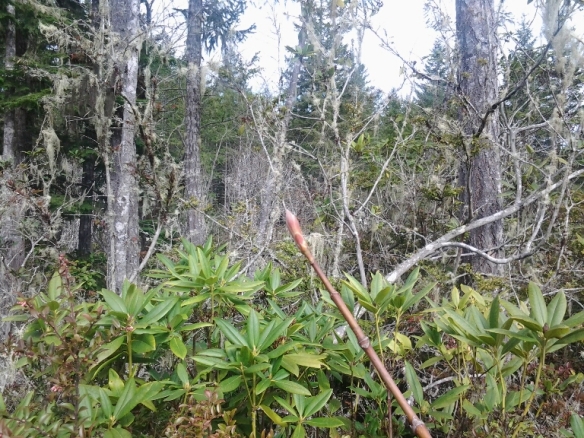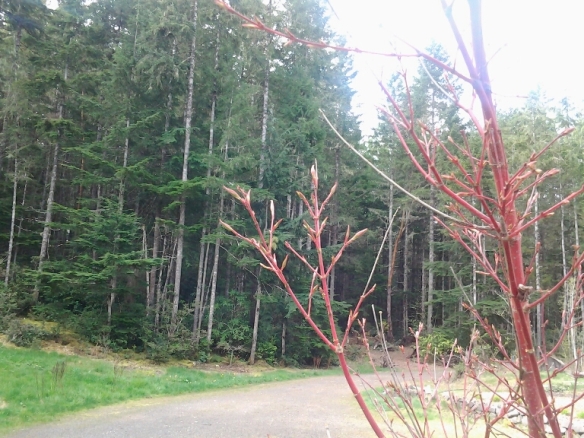Greetings readers. This is the first post composed entirely via our tablet. That said, please forgive any spelling or editing errors.
You may recall that several posts ago we promised to spend some time discussing hugelkultur. Well, since spring is here (okay, almost here – but it’s close!) It seemed a good time to visit the topic. So, let’s start with the question, “Just what the heck is hugelkultur anyway?” It is a gardening system designed to make sustainable horticulture in climates that experience very wet periods followed by extremely dry ones. Oddly enough, its roots are to be found in Eastern Europe.
What is entailed is to make a mound comprised of logs – which act as moisture traps; layered with twigs and branches – which add aeration; layered with straw, soil, and compost – which compost under the final layer of soil; thereby adding warmth and nutrients. For weed suppression, we add a final layer of cardboard followed by mulch. The cardboard needs to be the corrugated kind. This makes an ideal nesting place for earthworms which, as you have no doubt already guessed, add to the efficiency of the whole system.
We can go into the process more in a later post because today, we want to show you the effects of hugelkultur.
As many of you know, we live in the Northwest. Summers are short, winters are long, and anything you can do to get a jump on the growing season is good. Perhaps that is why you see more greenhouses per capita here than just about anywhere in the country. (Okay, there’s no sciensce backing this claim but it seems true.) That aside, we want to show you the effects of hugelkultur by comparing 4 maple trees around our yard.
This first photo is of a native Big Leaf maple. These hardy natives are just beginning to show their leaf buds. Notice that the bud is emerging from its protective sheath but still being a bit self protective because of the cool daytime temperatures and even cooler overnight ones.
This is one of the baźillion species of Acer Japonicum that you find all throughout the Northwest. This little darling is in a protected area of the yard, just at the forest edge. It has great drainage and yet, it shows only the hard exterior sheathing over its leaf buds.
This is the same (or similar) variety of maple as the one above. It is in a protected area near the foundation of the house. Notice how its leaves more closely resemble those of the native Big Leaf maple. This tree has obviously benefited from the warmth that the foundation has imparted to the surrounding soil.
This is a coral bark maple. These are planted as much for the color they impart to the winter landscape as for their lovely lime green foliage. This maple wintered over in a half whiskey barrel planter. Notice that its leaves are alos just emerging. Another example of heat trapping and insulation benefiting the plant’s health and progress.
Lastly, we see the same variety of coral bark maple but this time it has been planted in a huglekultur bed. Now, this bed is inside our shade garden. It is far colder inside there. In fact, on a recent walk we passed by it on a day when the ambient temperature was about 70 degrees. There was a decidely cold emianation from the shade garden. It was probably 10 degrees colder inside than outside the area yet, the maple inside it is further along than any of the others we have looked at.
So, you can see for yourself that our very unscientific study of five similar trees in five disparate locations shows us that hugelkultur can have a profound effect on plant growth.
Needless to say, I see far more hugelkultur planting on the horizon. For more adventures in Northwest hugelkultur gardening, visit Erica’s site.





